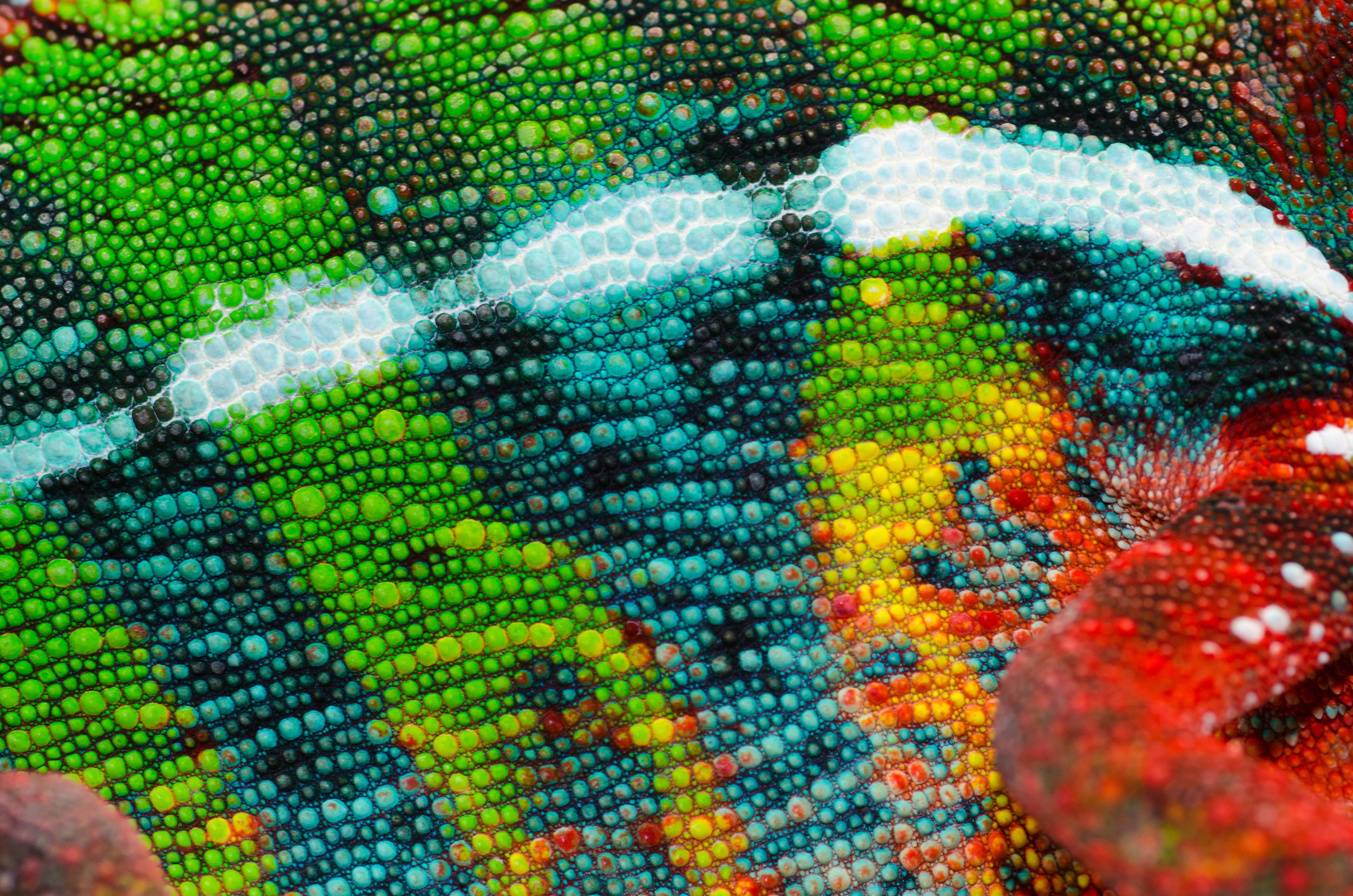Why do chameleons change colour?
Contrary to popular belief, chameleons do not change colour to camouflage in their environment.
As cold-blooded animals, the most common reason for these animals to adjust their colouration is to regulate their body temperature. As the animal moves from dense vegetation into the warm sunlight, it may appear lighter as it no longer needs to absorb so much heat, giving the impression it is matching its surroundings. However, the most vibrant colour changes can be attributed to their need to communicate with other chameleons.
Panther chameleon (Furcifer pardalis) skin is made up of several layers. The uppermost of this lattice is comprised of various cells which contain yellow (xanthophores) and red (erythrophores) pigments, which are responsible for giving the animal its patterns. More interestingly, below this is the iridophore cells which contain nanocrystals of various shapes and sizes which reflect sunlight in different ways. When the chameleon is relaxed, these cells will be close together, giving the animal its ‘normal’ colouration. In this relaxed state, the crystals reflect shorter wavelengths of light such as blue and green. However, as the animal becomes more stressed or excited, the distance between these cells becomes greater and thus the brightness of the animal is increased drastically, with red and yellows becoming much more visible. Of course, some animals will naturally exhibit some red and yellow colouration, particularly Ambilobe panther chameleons, but these colours will be drastically accentuated during periods of stress or excitement.
The iridophore cells can reflect a huge array of colours, which is why chameleons can be found in almost every colour on the spectrum. Remarkably, no violet chameleon has been recorded so far, but it is widely believed this is a result of natural selection. The chameleons which generally blend with their environment better, have a greater chance of survival. This is possibly why chameleons from areas of the world where there are fewer predators, often have such flamboyant colouration.


